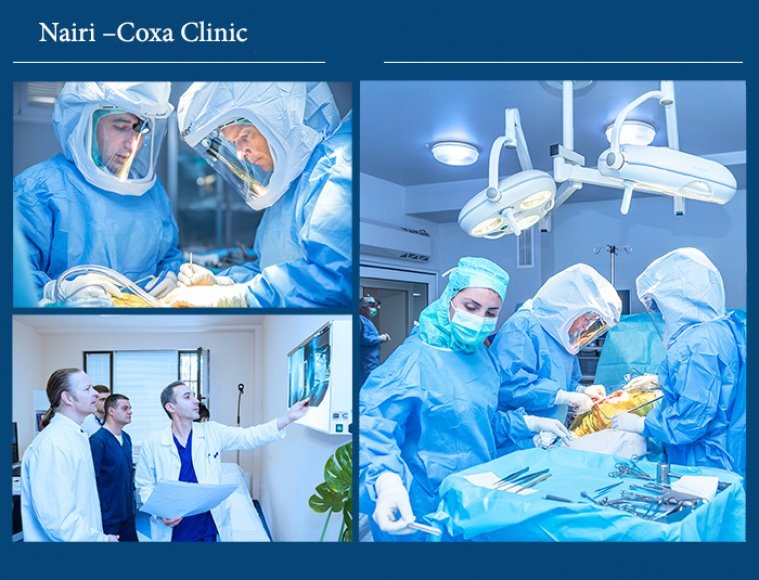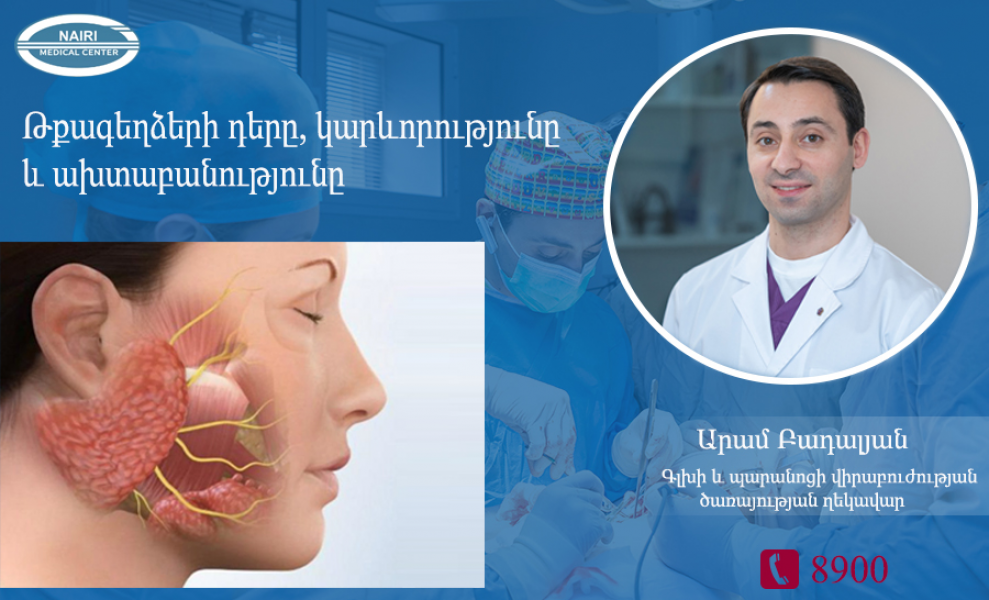News
Dr. Aram Badalyan details the role, capacity and pathology of salivary glands
03 September 2021 | News | Head and neck surgery | Head and neck tumors | Aram G. Badalyan
Malignant tumors continue to be the most serious challenge of the 21st century. Few people know that malignant tumors are quite common in the salivary glands, which function in the oral cavity and in the digestive system and receive little attention from us. We talked to Aram Badalyan, the head of the head and neck surgery service at Nairi Medical Center, about salivary glands and the pathologies associated with them.
What is the function of the salivary glands? Are they irreplaceable for our organism?
Yes, salivary glands are indispensable for the digestive system, their absence will dramatically worsen the quality of human life, will make it difficult to eat.
6 large and a number of small salivary glands are located around the head and neck. The function of the salivary glands is the production of saliva, which retains moisture in the mouth and facilitates the intake of food.
From time to time there may be dysfunction of several salivary glands, which does not drastically affect the quality of life, as the remaining salivary glands begin to work more actively, replacing the activity of the dysfunctional or malfunctioning salivary gland.
What diseases cause salivary gland dysfunction?
Inflammation of the salivary glands of a viral or infectious nature, called sialoadenitis, is more common. Inflammation of the salivary glands can often be treated with medication (conservatively). In case of ineffectiveness of conservative treatment, surgery to remove the gland is indicated. It should be noted that if the salivary gland is not treated, it can become chronic and lead the salivary gland to stop working with the course of time. And any chronic process, regardless of the cause, carries a risk of developing malignant tumors.
The next is salivary gland disease, which occurs in the obstruction of the salivary gland due to the presence of a stone, followed by inflammation of the gland. Often the stone in the duct can be removed without surgery. If it is not possible to eliminate the cause of the inflammation, we perform the surgery.
The next pathological group of salivary glands are benign tumors. The main benign tumors are salivary gland adenomas, which occur as a result of metabolic disorder.
And, of course, the malignant tumors of the salivary glands, which can be primary and secondary. Primary malignancies initially develop as malignant, and in secondary cases they develop against the background of a benign nodule. All types of salivary gland neoplasms require surgical approach.
Are there any causal or statistical data which cause benign or malignant tumors in the salivary glands?
First of all, it is necessary to mention the hygiene of the oral cavity, because all the ducts of the salivary glands open in the oral cavity. Poor care, smoking, abuse of spicy, sour foods in the diet, the presence of diabetes - other factors lead to the development of inflammatory foci in the salivary glands or to the formation of stones in the salivary glands.
Not all of the factors that lead to the development of benign or malignant tumors are known yet, but according to statistics, they are more common in women and in people who smoke. Malignant tumors of the salivary glands develop in patients receiving radiation therapy to the head and neck.
What tests have to be performed to diagnose diseases of the salivary glands?
The main method of diagnosis of salivary gland tumors or diseases is ultrasound examination (ultrasound), which easily detects the pathological phenomena in the salivary glands, their location, the condition of the salivary glands, the presence of stones in them. Sometimes additional tests, such as magnetic resonance imaging (MRI), are needed. In case of cancer, after ultrasound or MRI, a cell examination of the tumor is performed - a thin needle puncture biopsy to find out if the tumor is malignant or benign.
The only method of treating neoplasms found in the salivary glands, is surgery, the volume of which depends on the nature and extent of the tumor.
We did not talk about pathologies found in small salivary glands.
Inflammation of the small salivary glands are very rare in practice. Usually adenomas of the small salivary glands are frequent, which are benign neoplasms, and they require a surgical approach. Malignant tumors of the small salivary glands are very dangerous and develop rapidly, often appearing in the widespread stage, because they grow deep. In this case, a surgical approach is indicated.
Similar articles
-

Suddenly appeared vertigo
01 April 2020
-

Thyroid gland and pregnancy
27 September 2021
-

The second course of ''Caucasus School of Thyroid Gland'' took place
19 December 2019
-

What are the symptoms of bone cancer in children?
12 March 2020
-
 View all
View all
Sign up here for our newsletter





